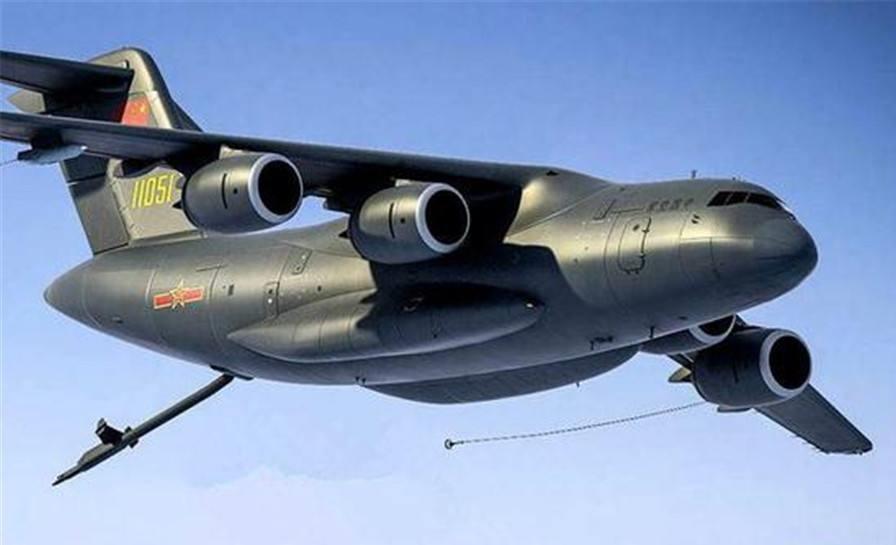Chinese People’s Liberation Army Air Force has formally commissioned the air refueller variant of the Y-20 jet-powered strategic transport aircraft. The aircraft recently carried out aerial refuelling exercises with the J-16 strike fighter above the sea, and the operations helped to improve combat training. The aircraft using a probe-and-drogue system to refuel two Shenyang Aircraft Corporation (SAC) J-16D fighter aircraft. The press conference that the aircraft has been designated as the YY-20. Similar to the Y-20, the new tanker is manufactured by Xi’an Aircraft Company (XAC), which is a subsidiary of the state-owned Aviation Industry Corporation of China (AVIC).
The Xi’an Y-20 is a large military transport aircraft. The project is being developed by Xi’an Aircraft Industrial Corporation and was officially launched in 2006. The official codename of the aircraft is Kunpeng, after the mythical bird that can fly for thousands of miles described in the ancient Chinese Taoist classic Zhuangzi. However, within the Chinese aviation industry itself, the aircraft is more commonly known by its nickname Chubby Girl, because its fuselage is much wider compared to other aircraft previously developed in China. The base model of Y-20 was further developed into the Y-20U as aerial refueling tankers which was introduced in late 2021.
The Y-20 uses components made of composite materials. The composites are now produced in China, whereas in the past they had to be imported.[13] The Y-20’s cabin incorporates flame-retardant composites developed by the 703 Institute of the China Aerospace Science and Technology Corporation (CASC). The 703 Institute was created in March 2009 with development taking three years. The performance of the composites is reportedly comparable to those that fulfill FAR Part 25.835. The 703 Institute achieved another milestone by establishing a comprehensive Chinese evaluation and certification system for aircraft composite materials based on international standards.
Cargo is loaded through a large aft ramp that accommodates rolling stock. The Y-20 incorporates a shoulder wing, T-tail, rear cargo-loading assembly and heavy-duty retractable landing gear, consists of three rows, with a pair of wheels for each row, totaling six wheels for each side. The structural test was completed in 194 days as opposed to the 300 days originally planned, thanks to the successful development and application of an automated structural strength analysis system. In comparison, similar work for the Xian JH-7 took a year. The shortest take-off distance of the Y-20 is 600 to 700 meters. Y-20 incorporates a total of four LCD EFIS, and the development of EFIS for Y-20 utilizes virtual reality via helmet mounted display.












